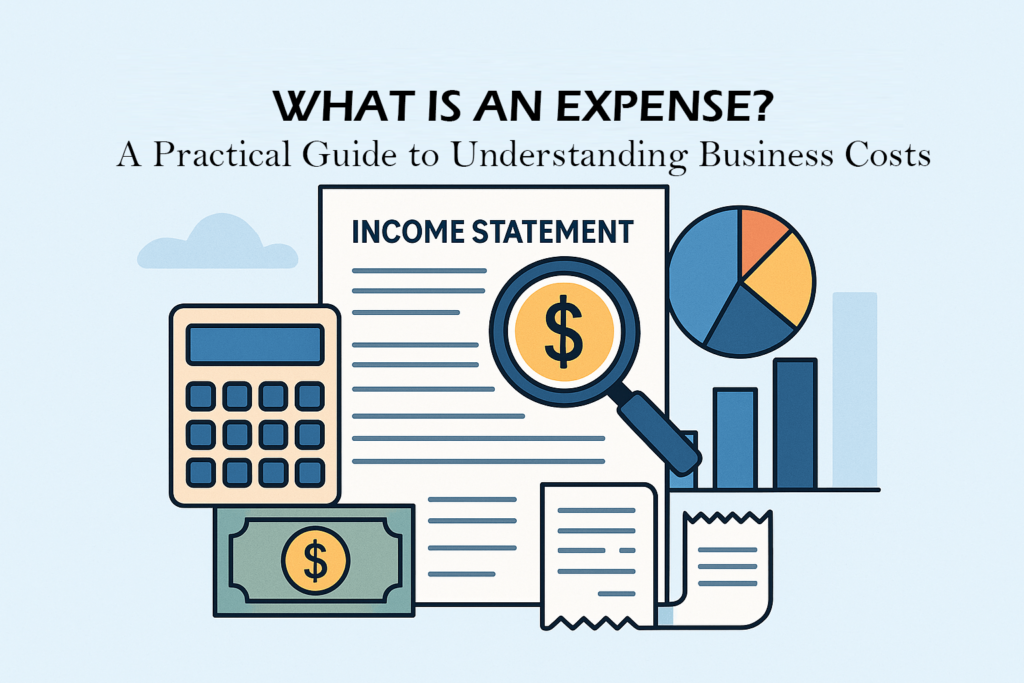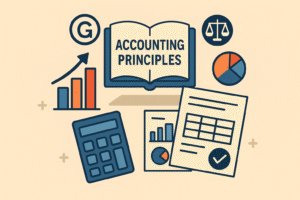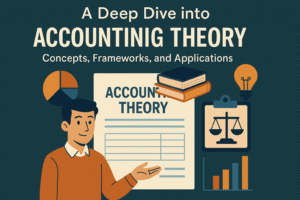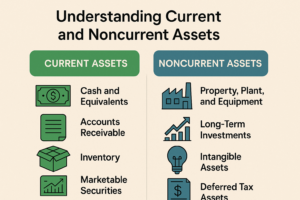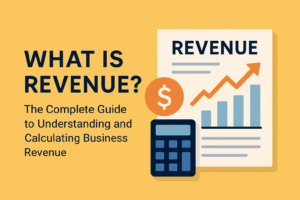In accounting and business finance, an expense refers to any cost incurred by an individual or entity in the process of generating revenue or maintaining operations. It represents an outflow of economic benefits—typically in the form of cash, inventory depletion, or incurrence of liabilities—that results in a reduction of equity.
Expenses play a pivotal role in financial reporting, particularly on the income statement, where they are matched against revenues to determine a business’s net profit or loss for a given period. From employee compensation and office leases to depreciation of assets and utility bills, expenses are fundamental to understanding a company’s financial health and operational efficiency.
Accurately identifying, classifying, and recording expenses is critical not only for internal decision-making and budgeting but also for tax compliance, external audits, and investment analysis.
Understanding Expenses
At a conceptual level, an expense is any cost that a business or individual incurs during its normal course of operations. These costs are essential to earning income or supporting administrative functions and are expensed in the accounting records once the benefit associated with them is consumed.
Under the accrual basis of accounting, expenses are recognized when they are incurred—not necessarily when they are paid. This aligns with the matching principle, which dictates that expenses should be recorded in the same accounting period as the revenues they help to generate. This approach provides a more accurate reflection of profitability and performance.
By contrast, under the cash basis of accounting, expenses are only recorded when cash is actually disbursed. While simpler, this method may distort financial results if significant timing differences exist between expense occurrence and payment.
How Expenses Are Recorded
The process of recording expenses is governed by accounting principles and depends on whether the business uses the accrual or cash accounting method:
Accrual Accounting
In accrual accounting:
- Expenses are recorded when the obligation arises, regardless of when payment is made.
- This method ensures that financial reports reflect all costs associated with the generation of revenue in a given period.
Example:
If a business receives a vendor invoice for raw materials in December but pays it in January, the expense is recorded in December because that’s when the materials were used for production.
Cash Accounting
In cash accounting:
- Expenses are recorded only when cash is paid.
- This method is generally accepted for small businesses that do not maintain inventory and are not required to follow Generally Accepted Accounting Principles (GAAP).
Example:
The same vendor invoice would be recorded in January, the moment the cash leaves the business.
Both methods involve debiting the relevant expense account and crediting either a cash account (if paid immediately) or a liability account (such as accounts payable) if payment is deferred.
Types of Business Expenses
Proper classification of expenses is essential for financial reporting, tax deduction planning, operational control, and performance evaluation. Business expenses can be broadly categorized based on their function, timing, or tax treatment.
Operating Expenses (OPEX)
Operating expenses are the day-to-day expenditures that are necessary to maintain and manage core business operations. These costs are incurred regularly and are fully deductible in the year they are incurred, provided they meet the IRS’s definition of ordinary and necessary business expenses.
Examples include:
- Salaries and Wages: Employee compensation, payroll taxes, and employee benefits.
- Rent and Lease Payments: Costs related to the use of commercial properties or equipment.
- Utilities: Electricity, water, heating, internet, and telecommunications.
- Office Supplies: Stationery, printing materials, and other consumables.
- Insurance Premiums: General liability, property, workers’ compensation, and business interruption insurance.
- Advertising and Promotion: Marketing campaigns, social media promotions, and SEO services.
- Repairs and Maintenance: Routine upkeep of equipment or facilities.
Operating expenses appear on the income statement below gross profit and are subtracted from it to arrive at operating income.
Nonoperating Expenses
Nonoperating expenses are those that do not arise from a company’s primary business operations. They are typically incidental, irregular, or financial in nature.
Examples include:
- Interest Expense: Costs associated with borrowing, such as interest on loans or credit lines.
- Loss on Disposal of Assets: When the sale price of an asset is lower than its book value.
- Foreign Exchange Losses: Arising from currency fluctuations in international transactions.
- Legal Settlements or Penalties: Nonrecurring legal payouts or regulatory fines.
These expenses are reported separately on the income statement to help users assess the company’s core operational efficiency without distortion from ancillary costs.
Special Considerations
Certain categories of expenses require nuanced accounting treatment due to their timing, nature, or associated tax implications.
Prepaid Expenses
Prepaid expenses are advance payments for goods or services to be received in future periods. Initially recorded as current assets, they are gradually expensed as the benefit is realized.
Examples:
Prepaid rent, prepaid insurance, and prepaid service contracts.
Accrued Expenses
These are expenses that have been incurred but not yet paid or invoiced. They are recognized through adjusting journal entries to ensure financials are complete and accurate.
Examples:
Accrued salaries, accrued utilities, accrued interest.
Depreciation
Depreciation allocates the cost of a tangible fixed asset over its useful life. It reflects wear and tear or obsolescence and is recorded as a non-cash expense.
Common methods:
- Straight-Line
- Declining Balance
- Units of Production
Amortization
Amortization applies the same principle as depreciation but to intangible assets such as patents, copyrights, and trademarks.
Both depreciation and amortization ensure expenses are recognized over the period in which the asset provides benefit.
Capital Expenses (CapEx)
Capital expenses are long-term investments in assets that will provide economic benefit over multiple accounting periods. These expenses are not deducted immediately; instead, they are capitalized and then depreciated or amortized over the asset’s useful life.
Examples include:
- Real estate purchases
- Equipment or machinery acquisitions
- Major renovations or improvements
- Software development costs
- Intellectual property acquisitions
CapEx is recorded on the balance sheet as a non-current asset and only affects the income statement gradually through depreciation or amortization.
Not All Expenses Can Be Deducted
While many business expenses qualify for tax deductions, not all are eligible under the IRS guidelines. To be deductible, an expense must be both ordinary (common and accepted in your industry) and necessary (appropriate and helpful for your business).
Non-deductible expenses include:
- Personal living expenses
- Lobbying and political contributions
- Entertainment (with limited exceptions)
- Fines and penalties (e.g., OSHA or parking fines)
- Club memberships and dues
- Commuting costs (unless reimbursed for business travel)
Maintaining accurate records and consulting tax professionals can prevent compliance issues and disallowed deductions.
What Are Examples of Expenses?
Here’s a breakdown of typical expenses businesses may encounter:
| Expense Type | Examples |
| Employee Compensation | Salaries, wages, bonuses, payroll taxes |
| Office Rent | Monthly lease payments for workspace |
| Utilities | Electricity, gas, water, internet |
| Insurance | Property, liability, health coverage |
| Professional Fees | Legal, consulting, and accounting services |
| Travel and Lodging | Business trips, hotel accommodations, per diems |
| Supplies | Stationery, office materials, packaging |
| Depreciation | Equipment, vehicles, buildings |
| Advertising | Digital ads, print media, promotional materials |
Each of these expenses, when substantiated with proper documentation, can be reported and potentially deducted.
What Are the Types of Expenses?
Expenses may be classified in several ways for analytical and financial reporting purposes:
1. Fixed Expenses
Remain constant regardless of business activity levels.
Examples: Rent, salaries, insurance premiums.
2. Variable Expenses
Fluctuate with operational output or sales volume.
Examples: Raw materials, commission-based wages, utilities.
3. Operating Expenses
Incurred during routine business operations.
Examples: Office supplies, payroll, advertising.
4. Capital Expenses
Represent asset investments for long-term use.
Examples: Machinery, property, software.
5. Financial Expenses
Arise from financing activities.
Examples: Interest payments, bank fees, debt issuance costs.
6. Accrued Expenses
Incurred but not yet paid or invoiced.
Examples: Unpaid salaries, pending utility bills.
7. Prepaid Expenses
Paid in advance for benefits received later.
Examples: Prepaid rent, annual subscriptions.
Proper classification ensures accurate tax filing, regulatory compliance, and useful financial analysis.
Is a Salary Considered an Expense?
Yes, a salary is considered a business expense, specifically classified under operating expenses. It reflects the cost of labor required to run the business and is recognized on the income statement in the period it is earned by the employee.
For employers:
- Salaries are deductible business expenses, reducing taxable income.
- Additional associated expenses include payroll taxes, health benefits, and retirement contributions.
For employees:
- Salaries are treated as personal income, subject to income tax withholding.
Salary expenses are typically one of the largest recurring costs for service-based or labor-intensive businesses.
Final Thoughts
Expenses form the backbone of business financial activity. From strategic capital investments to the smallest recurring office costs, they reflect not only what a business spends but how it operates and grows. An in-depth understanding of expense types, their classification, timing, and treatment can significantly enhance financial reporting accuracy, tax efficiency, and strategic planning.
For any business aiming to scale sustainably and remain compliant, expense management is not just a bookkeeping exercise—it’s a cornerstone of financial discipline and success.

